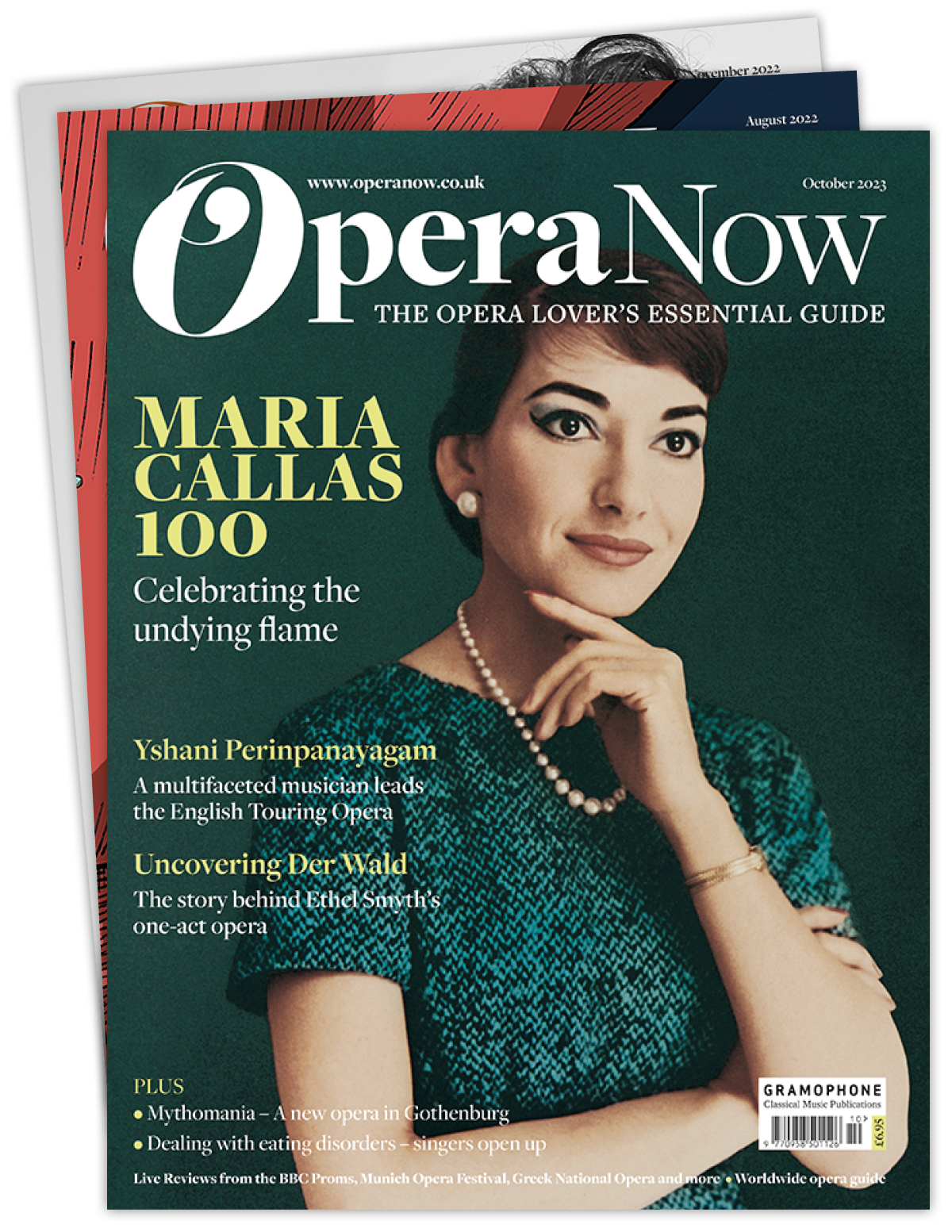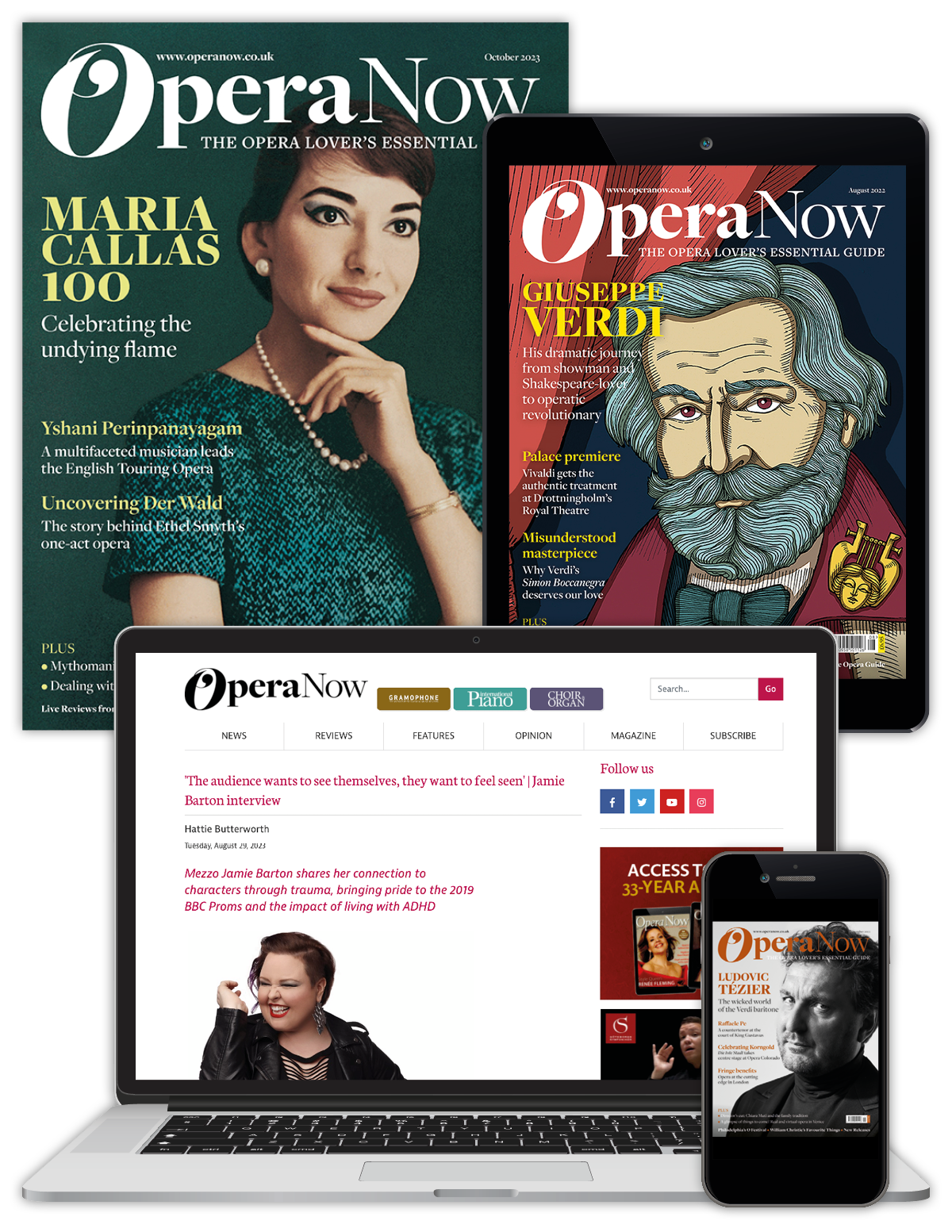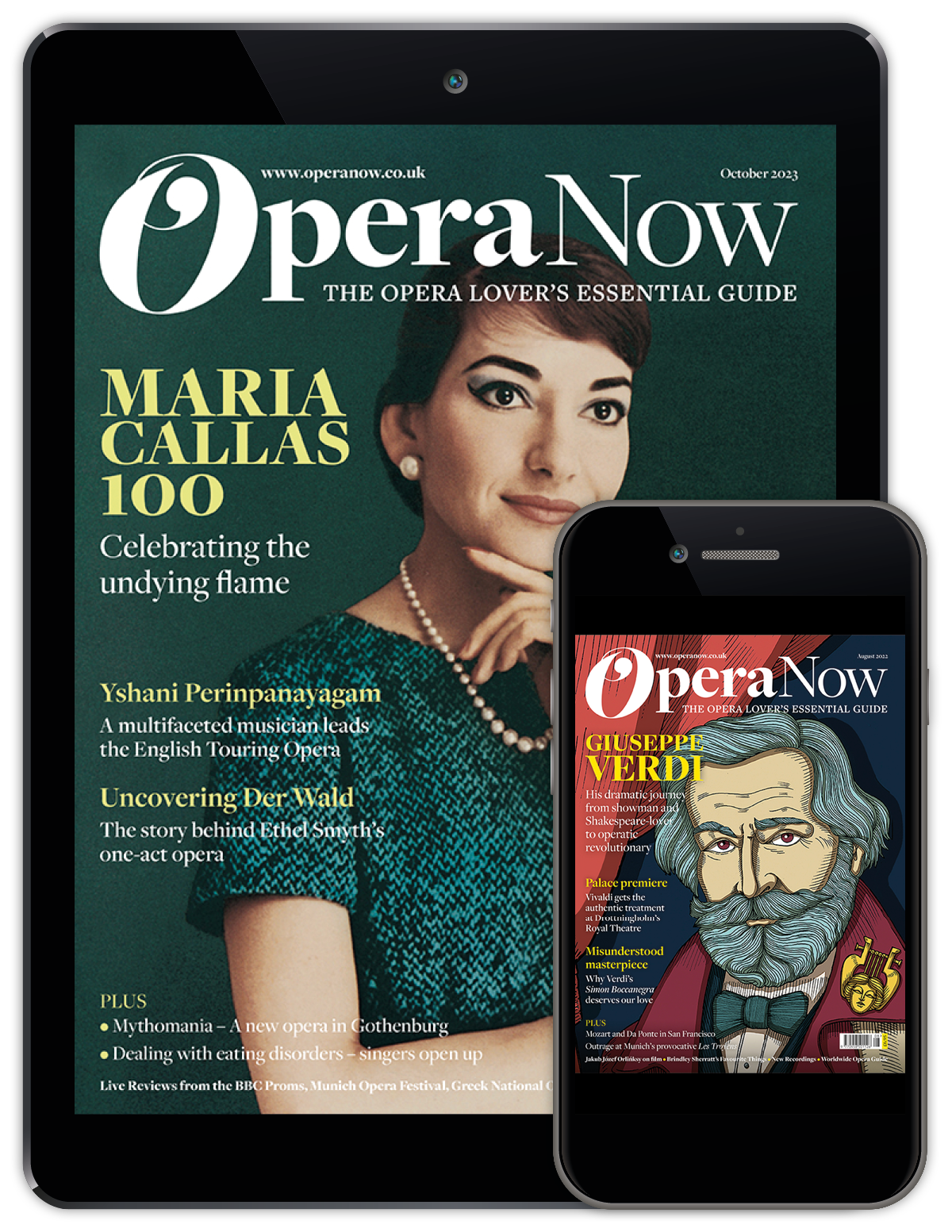Interview with designer Vicki Mortimer
Louise Flind
Thursday, April 24, 2025
From early experiments in Dublin to new productions in Oslo and Covent Garden, Vicki Mortimer looks back on a career in opera design
When do you start designing for an opera production?
An opera house invites a director to lead a production, and the director brings in their creative team – designer, costume designer, lighting, movement, and sometimes a dramaturg. I’m usually the second person through the door.
Did you grow up in a creative household?
Definitely a visually literate one. My dad was a modernist architect, and he was especially involved in repurposing old buildings. I grew up in Bristol and spent a lot of time visiting old buildings with him – thinking about who might have used them and what those spaces meant to people. That’s where my visual storytelling probably began. My mum is a ceramicist, and we lived in a house my dad designed and built.
Were you always drawing as a child?
I wouldn’t say I was a prodigious artist. I’ve always been more interested in telling stories. I was a massive reader.
What drew you to theatre?
The most fun, interesting, and brave people around me happened to be doing theatre. That had a big influence.
Did you go to art school?
I studied English at Oxford, where all the drama was student-led – there were lots of productions every term.
I designed posters, production managed, ran lights... and I met director Katie Mitchell, who I’ve worked with a lot since.
What led you into design specifically?
I did A-level art and art history. And growing up surrounded by architecture and ceramics meant I was always absorbing visual ideas. I also had a hunger to express things visually.
I was lucky that people like Katie created opportunities, and I got to be part of that.
What was your first big break?
Chichester Festival Theatre had a scheme at the summer festival where they paired up directors and designers who didn’t know each other to do two small-scale productions each year. Through that, I designed A View from the Bridge at the Crucible in Sheffield. Around the same time, I met a director who started a small theatre company in Tokyo, and for 10 years I went there every year to make a show in a tiny old dye warehouse.
How does the process of designing a show usually work?
Ideally, you’re brought in around two years before rehearsals. You have initial creative conversations with the director, then I gather lots of visual references so we’re speaking the same visual language. From there, we work in scale model. The ‘white card’ model is usually presented about 18 months before rehearsals so everyone can assess it financially and logistically. After that, you’ve still got five months or so to develop the final model. The scenic build has to start long before rehearsals, and if you’re doing costumes too, you’ll be fitting the chorus early. The first day of rehearsals doesn’t feel like the beginning to me – it’s already well underway by then.
What was your first opera production?
It was Don Pasquale for Dublin Grand Opera, and I had absolutely no idea what I was doing! It had an amateur chorus and professional singers. We performed it at the Gaiety Theatre, where the green room bar was still open during the show…
Do you prefer designing costumes too?
Yes, I do. Growing up in theatre, everyone did a bit of everything.
Do you have a preference between opera, theatre, or musicals?
Sondheim’s Follies at the National Theatre (2017) was a bit of a one-off. I’ve done opera, theatre, and contemporary ballet – they’re all interesting in different ways.
Have you worked in film or TV?
I’ve been tempted, but it didn’t seem practical while raising a family.
So you have children?
I have one, and Mark [Padmore] has one – we got together when they were both seven, and they’re 24 now.
Career highlights?
I turned 60 last year and I’ve never kept a portfolio or any memorabilia. But for my birthday, Mark did this incredible detective job and gathered it all – programmes, images, memories. It was really moving. Out of about 140 shows, there are fewer than five I’d rather not have done! I’ve had an astonishing number of opportunities – it’s hard to single things out.
 Vicki Mortimer’s design for Katie Mitchell’s production of Lucia di Lammermoor
Vicki Mortimer’s design for Katie Mitchell’s production of Lucia di Lammermoor
And the low points?
The ones that lacked honesty – shows that felt cynical or lazily put together.
Has designing changed much since you started?
The essence of designing hasn’t changed – it’s still a central part of the collaborative process. But you do notice shifts in focus. For instance, immersive staging and digital media have become big trends in recent years.
What would you have done if you weren’t a designer?
I think I was embryonic – I could have ended up doing whatever I happened to fall into.
Would you recommend your job to a friend?
That’s a difficult question right now. If I could lift the job out of the current social and political context, then yes – without hesitation.
It’s the most creatively vibrant, enjoyably difficult, multifaceted way of working. But sustaining a creative career now is really hard. That said, it’s vital that the next generation keeps making work and giving audiences new experiences.
What’s coming up next?
Oedipus Rex with Wayne McGregor in Oslo this September, and The Makropulos Case at the Royal Opera this autumn, directed by Katie Mitchell.









